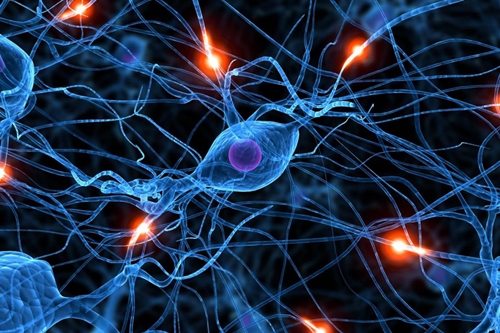2 March 2017. A patch worn on the arm providing stimulation to nerve cells was shown in a clinical trial to reduce the amount of pain experienced by people with migraines. Results of the trial appear in the 1 March issue of the journal Neurology (paid subscription required), published by American Academy of Neurology.
The trial tested a system made by Theranica Bio-Electronics, a company in Netanya, Israel developing devices to control pain, beginning with migraine, using neuromodulation, or electronic stimulation of circuits in the nervous system. Migraine is a neurological syndrome causing severe headaches along with nausea, vomiting, and extreme sensitivity to light and sound. In some cases, migraines are preceded by warning episodes called aura including flashes of light, blind spots, or tingling in arms and legs. The web site Migraine.com estimates 37 million people in the U.S. suffer from migraines, and cites World Health Organization data indicating migraines affect 18 percent of American women and 7 percent of men.
Theranica’s system consists of a patch worn on the upper arm with a miniature battery, chip, and electrodes emitting painless, weak electronic impulses designed to block pain signals from reaching the brain. The device is controlled wirelessly with a smartphone app. People with the device are asked to apply the patch and start the device when they begin experiencing a migraine and wear it for 20 minutes. The company says the chip also processes feedback from motor neurons, and has safety features to detect, for example, improper placement of the patch.
The clinical trial was led by David Yarnitsky, a professor of neurology at Technion-Israel Institute of Technology in Haifa, and a medical advisor to Theranica. The study enrolled 71 individuals who experienced between 2 and 8 migraine episodes a month. Participants were asked to use the Theranica device for 20 episodes, as well as refrain from using pain medication for 2 hours after using the device.
The system used in the trial was programmed to randomly emit impulses at 3 levels of stimulation, as well as a non-stimulating sham signal for comparison. For this study, the 71 systems captured data on 299 migraine episodes, where participants rated their migraine pain levels on the smartphone app. Data from the devices were transmitted without personal identification to a remote database for analysis.
The results show nearly two-thirds (64%) of participants receiving stimulation at the 3 active levels experienced reductions in pain by 50 percent or more in the 2 hours following treatment, compared to about a quarter (26%) receiving a non-stimulating signal. More than half (58%) of individuals experiencing severe to moderate pain in their migraine episodes found their pain reduced to mild levels or no pain when receiving the highest stimulation level. Again, only about a quarter (24%) of those receiving non-stimulating signals experienced similar pain reductions.
More participants starting the stimulation within 20 minutes of an episode (47%) experienced reductions in pain, compared to those who started the device after 20 minutes (25%). However, many participants turned off the device during the non-stimulating signals, when they discovered the signals were not reducing their pain.
“People with migraine are looking for non-drug treatments,” says Yarnitsky in an American Academy of Neurology statement, “and this new device is easy to use, has no side effects, and can be conveniently used in work or social settings.”
Theranica says migraine is the first target of its non-drug pain technology. The company plans to expand its use to other types of acute and chronic pain, including muscle soreness.
More from Science & Enterprise:
- Long-Acting Opioid Abuse Therapy Shown Working in Trial
- Non-Addictive Pain Medication Shown Working in Animals
- Safer Pain-Killing Drug Candidate Discovered
- Electronic Patch Offers Pain Relief, Cuts Medication Use
- Vibration Technology Developed to Diagnose Back Pain
* * *


 RSS - Posts
RSS - Posts
[…] Mobile App-Controlled Patch Reduces Migraine Pain […]